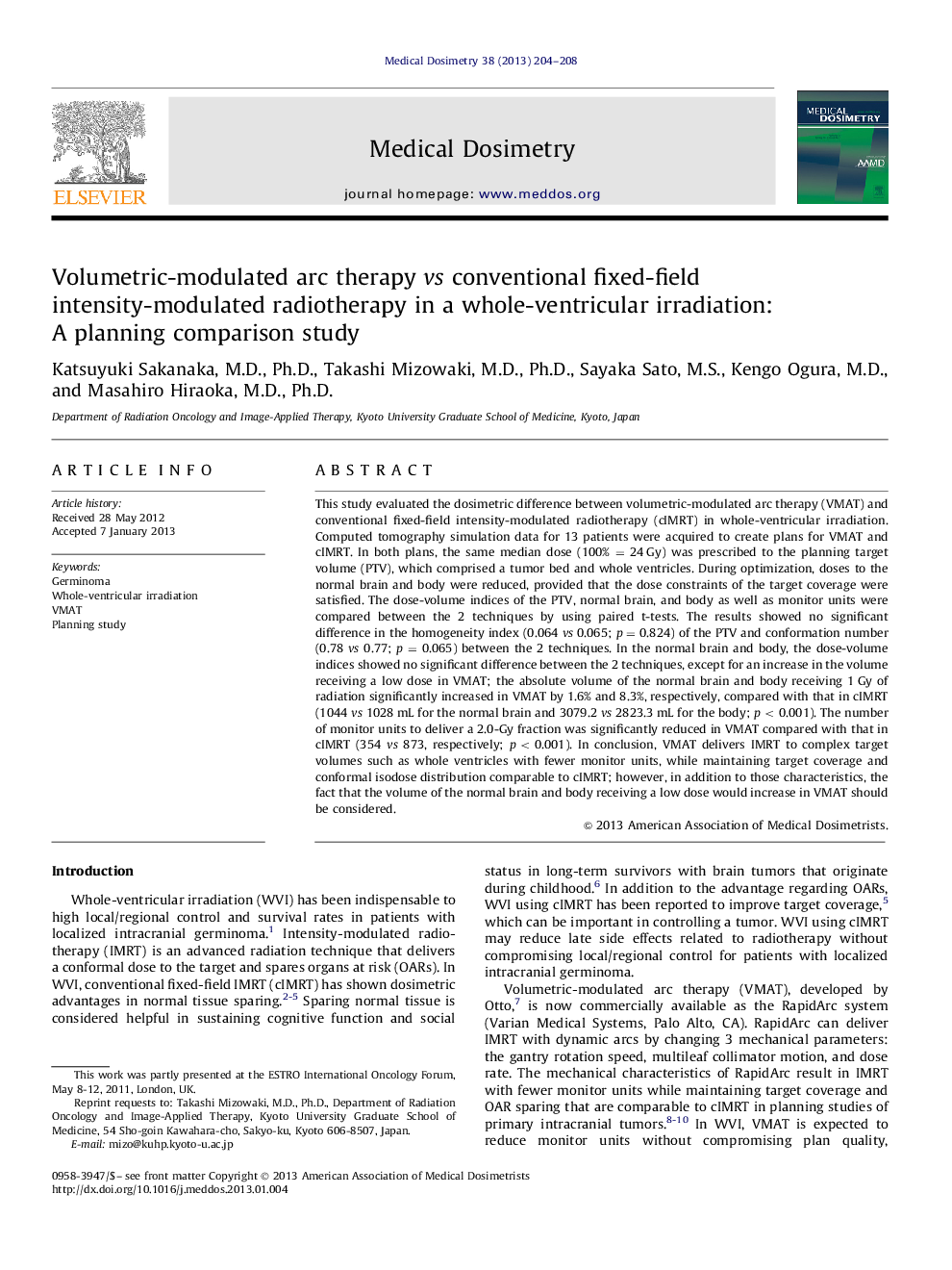| Article ID | Journal | Published Year | Pages | File Type |
|---|---|---|---|---|
| 1881991 | Medical Dosimetry | 2013 | 5 Pages |
Abstract
This study evaluated the dosimetric difference between volumetric-modulated arc therapy (VMAT) and conventional fixed-field intensity-modulated radiotherapy (cIMRT) in whole-ventricular irradiation. Computed tomography simulation data for 13 patients were acquired to create plans for VMAT and cIMRT. In both plans, the same median dose (100% = 24Â Gy) was prescribed to the planning target volume (PTV), which comprised a tumor bed and whole ventricles. During optimization, doses to the normal brain and body were reduced, provided that the dose constraints of the target coverage were satisfied. The dose-volume indices of the PTV, normal brain, and body as well as monitor units were compared between the 2 techniques by using paired t-tests. The results showed no significant difference in the homogeneity index (0.064 vs 0.065; p = 0.824) of the PTV and conformation number (0.78 vs 0.77; p = 0.065) between the 2 techniques. In the normal brain and body, the dose-volume indices showed no significant difference between the 2 techniques, except for an increase in the volume receiving a low dose in VMAT; the absolute volume of the normal brain and body receiving 1Â Gy of radiation significantly increased in VMAT by 1.6% and 8.3%, respectively, compared with that in cIMRT (1044 vs 1028Â mL for the normal brain and 3079.2 vs 2823.3Â mL for the body; p<0.001). The number of monitor units to deliver a 2.0-Gy fraction was significantly reduced in VMAT compared with that in cIMRT (354 vs 873, respectively; p<0.001). In conclusion, VMAT delivers IMRT to complex target volumes such as whole ventricles with fewer monitor units, while maintaining target coverage and conformal isodose distribution comparable to cIMRT; however, in addition to those characteristics, the fact that the volume of the normal brain and body receiving a low dose would increase in VMAT should be considered.
Keywords
Related Topics
Physical Sciences and Engineering
Physics and Astronomy
Radiation
Authors
Katsuyuki M.D., Ph.D., Takashi M.D., Ph.D., Sayaka M.S., Kengo M.D., Masahiro M.D., Ph.D.,
